Advent calendar - December 24th - Zernike Institute Papers of the Year 2022
In the Zernike Institute Advent Calendar, we are presenting 24 short spotlights in December. In these specials, we highlight PhD students, postdocs, support staff, and technicians of our research groups and team - providing a glimpse into their typical day at work. In Episode 24 - the final one - we are deviating from this and provide our handpicked Best of 2022 publications - the personal research highlights of our principal investigators. These are original research works or reviews authored or co-authored by members of our team. We provide them together with a short summary on what makes the publication a special one. Enjoy the selection, enjoy the science, learn something new, stay curious and most importantly: stay safe, stay healthy and enjoy the holiday season and all the best for 2023!
The principal investigators are listed in alphabetcial order
Use ctrl+f (Windows)/ cmd+f (Mac) to search for keywords of your interest

Strain-driven antiferromagnetic exchange interaction in SrMnO 3 probed by phase-shifted spin Hall magnetoresistance | J. J. L. van Rijn, D. Wang, B. Sanyal, and T. Banerjee| Multiferroics have found renewed interest particularly for topological magnetism and for logic-in-memory applications such as in MESO demonstrated by Intel. SrMnO3 is a rare example of a multiferroic, theoretically predicted to exhibit a very strong magnetoelectric coupling due to strain. In this work we study this using a charge based magnetic order probe, Spin Hall Magnetoresistance (SMR). We demonstrate a new feature in the phase response of the SMR, hitherto unreported, in strained SMO revealing antiferromagnetic domains, corroborates with DFT and consistent with ferroelectric polarization in SrMnO3. This opens new directions for antiferromagnetic spintronics, orbitronics and for electric field control of magnetic order in multiferroic materials for alternative computing applications.

Magnetocaloric effect and critical behavior in arylamine-based copper chloride layered organic-inorganic perovskite| Liany Septiany and Graeme R Blake | Although the research field of halide perovskites is enormously popular due to their excellent optoelectronic properties, they can also exhibit interesting and useful magnetic properties when transition metal cations are incorporated in the crystal structure. In this paper we showed that layered halide perovskites can potentially act as good magnetocaloric materials. Such materials exhibit a large magnetic entropy change in response to an applied magnetic field and can form the basis of solid-state cooling devices that are more efficient than conventional refrigeration systems. The magnetocaloric effect in layered halide perovskites is most pronounced at temperatures around 20K, a region that is of great interest for the liquefaction of hydrogen fuel for storage.

Synergistic interplay between photoisomerization and photoluminescence in a light-driven rotary molecular motor | Ryojun Toyoda, Nong V. Hoang, Kiana Gholamjani Moghaddam, Stefano Crespi, Daisy R. S. Pooler, Shirin Faraji, Maxim S. Pshenichnikov, Ben L. Feringa | In this paper the theoretical chemists at Zernike, in a close collaboration with local experimental groups, shed light on the newly developed hybrid light-driven molecular motors that combine optical and mechanical properties, and thus open up application areas that have, so far, remained out of reach, such as mechanical manipulation in molecular surgery. The fluorescence rotatory motor showing different behaviours in different solvents became a puzzle for experimentalists. This was where theory could play a role. Their extensive quantum mechanical calculations demonstrated that the key energetics governing the photo-excited dynamics strongly depend on the solvent polarity. This synergized in principle and in practice approach highlights the interplay between theoretical and experimental studies and illustrates the power of such combined efforts.
This paper was chosen as Nat. Commun. editor’s highlight and was featured in ScienceLinX.

The effect of nanoparticle softness on the interfacial dynamics of a model polymer nanocomposite | Yuwen Zhu, Andrea Giuntoli, Wengang Zhang, Zhongqin Lin, Sinan Keten, Francis W. Starr, and Jack F. Douglas | The introduction of soft organic nanoparticles (NPs) into polymer melts has recently expanded the material design space for polymer nanocomposites, compared to traditional nanocomposites that utilize rigid NPs, such as silica, metallic NPs, and other inorganic NPs. We used molecular dynamics simulations to systematically investigate the role of NP softness and NP-polymer interactions on the dynamics at their interface. For critical values of NP softness and interaction strength, it is possible to invert the role of the NP, either making the entire composite softer or more rigid.

In situ exfoliation method of large-area 2D materials | Antonija Grubišić-Čabo, Matteo Michiardi, Charlotte E. Sanders, Marco Bianchi, Davide Curcio, Dibya Phuyal, Magnus H. Berntsen, Qinda Guo, Maciej Dendzik | Two-dimensional (2D) materials provide an extremely rich platform to discover novel physical phenomena and to design structures with desired properties. However, methods to produce large-area and high-quality 2D materials are still lacking. In this paper, we show how one can exfoliate 2D materials in ultra-high vacuum using “Kinetic in situ single-layer synthesis” (KISS) method which yields large flakes of excellent crystallinity and interface quality. The KISS method is simple and general, and is successfully applied for exfoliation of various transition metal dichalcogenides on both metallic and semiconducting surfaces. As the whole KISS procedure happens in ultra-high vacuum, it is ideally suited for research into the electronic properties of materials by surface sensitive techniques such as angle-resolved photoemission spectroscopy, and to study air-sensitive materials.

Unconventional spin Hall effects in nonmagnetic solids | Arunesh Roy, Marcos H. D. Guimarães, and Jagoda Sławińska | Direct and inverse spin Hall effects lie at the heart of novel applications that utilize spins of electrons as information carriers, allowing the generation of spin currents and detecting them via the electric voltage. In the standard arrangement, an applied electric field induces transverse spin current with perpendicular spin polarization. Although conventional spin Hall effects are commonly used in spin-orbit torques or spin Hall magnetoresistance experiments, the possibilities to configure electronic devices according to specific needs are quite limited. Here, we investigate unconventional spin Hall effects that have the same origin as conventional ones, but manifest only in low-symmetry crystals where spin polarization, spin current, and charge current are not enforced to be orthogonal. Based on the symmetry analysis for all 230 space groups, we have identified crystal structures that could exhibit unusual configurations of charge-to-spin conversion.
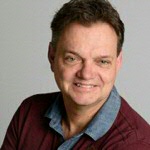
Charge exchange in collisions of 1–100-keV Sn³⁺ ions with H₂ and D₂ | Subam Rai, Klaas Bijlsma, I. Rabadán, L. Méndez, P. A. J. Wolff, M. Salverda, O. O. Versolato, and R. Hoekstra | The paper presents the first data on single electron capture by Sn³⁺ colliding with H₂ and D₂. The data are taken with our new crossed beam apparatus specially designed to study tin ion interactions of relevance to the EUV sources powering modern-day EUV nanolithography tools. The work performed in collaboration with the quantum-collision group from Madrid nicely combines application driven research with fundamental atomic physics research. The results for D₂ show good agreement with our semi-quantal calculations, while for H₂ the experimental results increase more strongly than the calculations toward lower energies. This discrepancy we attribute to vibrational effects, and thus to a breakdown of the Franck-Condon approximation.

Ultrafast Excitation Energy Transfer Dynamics in the LHCII–CP29–CP24 Subdomain of Plant Photosystem II | Thanh Nhut Do, Hoang Long Nguyen, Parveen Akhtar, Kai Zhong, Thomas LC Jansen, Jasper Knoester, Stefano Caffarri, Petar H Lambrev, Howe-Siang Tan| This paper is the result of a collaboration between our group, the spectroscopy group of Howe Siang Tan, and the biology groups of Stefano Caffarri, and Petar Lambrev. In these unique measurements the effect of aggregation of the light-harvesting systems in plants on the energy transfer within and between these. In particular, a two-fold speedup of the energy transfer from the so-called "bottleneck" states was observed upon aggregation. This clearly demonstrates the importance of studying the effect of interactions between the different antenna complexes, which has until recently mostly been studied independently. Overall, the paper contributes to the fundamental understanding of photosynthesis and how plants optimize this process, which in turn may lead to the development of crops with higher yields.

Multi‐Responsive Jammed Micro‐Gels Ink: Toward Control over the Resolution and the Stability of 3D Printed Scaffolds | Julien Es Sayed, Mohammad Khoonkari, Marta Oggioni, Patrick Perrin ,Nicolas Sanson, Marleen Kamperman, Małgorzata Katarzyna Włodarczyk-Biegun | During the past decade, increasing efforts have focused on developing 3D printable inks for applications that are often interfacing with biological systems, as in tissue engineering, regenerative medicine, soft robotics, or wearable electronics. In this paper, which is the result of a fruitful collaboration with our colleagues from the SIMM lab in ESPCI Paris, we highlight the potential of combining granular hydrogels, stimuli-responsive polymers and supramolecular chemistry to develop multi-responsive 3D printed cell culture scaffolds.

Nanostructure and thermal power of highly-textured and single-crystal-like Bi2Te3 thin films | Heng Zhang, Jamo Momand, Joshua Levinsky, Qikai Guo, Xiaotian Zhu, Gert H ten Brink, Graeme R Blake, George Palasantzas, Bart J Kooi | In this paper we show the importance of the nanostructure of Bi2Te3 thin films on their thermoelectric performance. The measured properties are correlated with the atomic structure details unveiled by scanning transmission electron microscopy. Highly textured thin films show the highest power factor found for to date for Bi2Te3 thin films. They show the optimal compromise between high electrical conductivity and high Seebeck coefficient. Single-crystal-like thin films show higher electrical conductivity but their Seebeck coefficient reduces too much. On the other hand, polycrystalline films show high Seebeck coefficient, but their electrical conductivity reduces too much.

Voltage Deficit in Wide Bandgap Perovskite Solar Cells: The Role of Traps, Band Energies, and Effective Density of States | Marten Koopmans, L. Jan Anton Koster | Wide-bandgap (1.7 eV) perovskite solar cells (PSCs) are plagued by relatively low open-circuit voltages. This is problematic as they are key to achieving perovskite silicon tandems, which can boost the potential of silicon solar cells. Performance in PSCs is widely considered to be limited by recombination at the interface between the perovskite and the transport layer (TL). Here, a number of design rules to increase the open-circuit voltage of wide-bandgap PSCs are introduced. A numerical device model that includes a detailed description of the interfacial recombination processes is presented. The combined effects of interface traps, ions, band alignment, and transport properties are introduced to identify the critical parameters for improving the open-circuit voltage. A large number of devices are simulated by picking random combinations of parameters and are looked for trends. It is shown that interface recombination can be suppressed by reducing the minority carrier density close to the interface with the TLs. It is demonstrated that the alignment of energy levels is only part of the story; the effective densities of states are of equal importance. The results pave the way to achieving high open-circuit voltages, despite a significant density of interface defects.

Approaching Bulk Mobility in PbSe Colloidal Quantum dots 3D Superlattices | Jacopo Pinna, K. Razieh Mehrabi, Dnyaneshwar S. Gavhane, Majid Ahmadi, Suhas Mutalik, Muhammad Zohaib, Loredana Protesescu, Bart J. Kooi, Giuseppe Portale and Maria Antonietta Loi | Quantum dots are clusters of some 1,000 atoms which act as one large ‘super-atom’. It is possible to accurately design the electronic properties of these dots just by changing their size. However, to create functional devices, a large number of dots have to be combined into a new material. During this process, the properties of the dots are often lost. Our team has succeeded in making a highly conductive optoelectronic metamaterial through self-organization.

Scalable and degradable dextrin-based elastomers for wearable touch sensing | Lan, X.; Li, W.; Ye, C.; Boetje, L.; Pelras, T.; Silvianti, F.; Chen, Q.; Pei, Y.; Loos, K.| This paper is a very interesting cooperation with ENTEG to address the problem of electronic waste in wearable electronics. Effective contact is typically required in these devices, but this can lead to friction and wear on the sensors, eventually causing them to be discarded. We present a novel starch-based elastomer that can be used to make touch sensors without the need for toxic solvents. This material is less expensive and easier to scale up than existing degradable elastomers, and its production process is more environmentally friendly. We were able to use the material to create a self-powered touch-sensing device with a fast response time of 60 ms, comparable to commercial pressure sensors.

Greener Synthesis Route for Furanic-Aliphatic Polyester: Enzymatic Polymerization in Ionic Liquids and Deep Eutectic Solvents | Fitrilia Silvianti, Dina Maniar, Laura Boetje, Albert J. J. Woortman, Jur van Dijken, and Katja Loos | Enzymatic polymerization is known to be an environmentally friendly route for polymer synthesis. However, the use of organic solvents is often one of the drawbacks in developing a fully green enzymatic polymerization pathway. This paper reports the synthesis of biobased furanic-aliphatic polyesters (FPEs), using green solvents, such as ionic liquids (ILs) and deep eutectic solvents (DES). The role of these solvents and how they affect enzymatic polymerization are discussed in detail. Our findings have directly contributed to paving the way for a more environmentally friendly polymerization route.

Topologically protected magnetoelectric switching in a multiferroic | Louis Ponet, S. Artyukhin, Th. Kain, J. Wettstein, Anna Pimenov, A. Shuvaev, X. Wang, S.-W. Cheong, Maxim Mostovoy & Andrei Pimenov | A crankshaft converts linear motion of a piston, for example in an internal combustion engine into rotational motion of a wheel. It was known to Romans, played a crucial role in the industrial revolution and still is an essential part of many vehicles and devices. A team of researchers from the Vienna University of Technology, Istituto Italiano di Tecnologia, Beijing Institute of Technology, Rutgers University and University of Groningen found a magnetic material Gd2Mn2O5 that works similarly to crankshaft. Half of all Mn spins in this material rotate as a magnetic field applied along a fixed direction increases and subsequently decreases to zero. In contrast to the usual magnetization precession, spins in Gd2Mn2O5 only rotate when the magnetic field varies. The magnetic crankshaft works like a four-stroke engine, the full circle rotation requires ramping up and down the magnetic field two times.
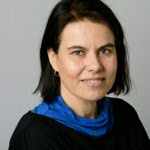
Ferroelastic Domain Walls in BiFeO3 as Memristive Networks | Rieck, J.L., Cipollini, D., Salverda, M., Quinteros, C.P., Schomaker, L.R.B. and Noheda, B. | We show for the first time that electronic transport is possible through a dense network of domain walls (DWs) in BiFeO3 thin films. Electric field cycling at different points of the network, performed locally by conducting atomic force microscopy induces resistive switching selectively at the DWs, both for vertical (single wall) and lateral (wall-to-wall) conduction. These findings are the first step toward investigating DWs as memristive networks for information processing and in-materio computing.

Molecular basis of C9orf72 poly-PR interference with the β-karyopherin family of nuclear transport receptors | Jafarinia, H., Van der Giessen, E. and Onck, P.R. | In this paper we study the effect of genetic (C9orf72) mutations in the neurodegenerative diseases ALS and FTD through molecular dynamics simulations. We report the key molecular mechanisms that disrupt nucleocytoplasmic transport, providing a mechanistic understanding of the inherent length-dependence of this genetic repeat expansion.

Two closely-related papers which as highlights of the year 2022:
Synergistic interplay between photoisomerization and photoluminescence in a light-driven rotary molecular motor | Ryojun Toyoda, Nong V. Hoang, Kiana Gholamjani Moghaddam, Stefano Crespi, Daisy R. S. Pooler, Shirin Faraji*, Maxim S. Pshenichnikov* & Ben L. Feringa*. (*corresponding authors) |
Dual-function artificial molecular motors performing rotation and photoluminescence | Lukas Pfeifer, Nong V Hoang, Stefano Crespi, Maxim S Pshenichnikov*, Ben L Feringa* (*corresponding authors) |
Rotary molecular motors were first created in 1999, in the laboratory of Ben Feringa, Professor of Organic Chemistry at the University of Groningen. These motors are driven by light. For many reasons, it would be good to be able to make these motor molecules visible. The best way to do this is to make them fluoresce. However, combining two light-mediated functions in a single molecule is quite challenging. The Feringa laboratory, in close collaboration with the group of Macim Pchenitchnikov, has now succeeded in doing just that, in two different ways. These two types of fluorescing light-driven rotary motors were described in Nature Communications (30 September) and Science Advances (4 November).

Structural Dynamics and Tunability for Colloidal Tin Halide Perovskite Nanostructures | Kushagra Gahlot, Sytze de Graaf, Herman Duim, Georgian Nedelcu, Razieh M. Koushki, Majid Ahmadi, Dnyaneshwar Gavhane, Alessia Lasorsa, Oreste De Luca, Petra Rudolf, Patrick C. A. van der Wel, Maria A. Loi, Bart J. Kooi, Giuseppe Portale, Joaquín Calbo, Loredana Protesescu | The paper describes major advancements in the field of lead-free perovskite nanocrystals. Abstract: The metal halide perovskite nanocrystals have reached the maturity to compete with conventional quantum dots. Yet, the development of their lead-free analogs containing tin is hampered by the unstable nature of Sn2+ oxidation state and by an insufficient understanding of the chemical processes involved in the syntheses. This manuscript presents a significant advancement in the lead-free halide perovskite nanomaterials by describing for the first time the synthesis of stable, tunable, and monodisperse colloidal CsSnI3 nanocrystals, exhibiting well defined excitonic peaks (from 1.5 eV to 2.05 eV). Another important main finding is the evolution of the nucleation and growth of the CsSnI3 nanocrystals, which follow the formation of (R-NH3+)2SnI4, as shown by the control (Cs free) reactions. Using our synthetic methods, from the same precursors, only by varying the cations and anions ratios, we obtained fully inorganic 3D CsSnI3 nanocrystals or a mixture of 3D CsSnI3 nanocrystals and 2D Ruddlesden-Popper (R-NH3+)2Csn-1SnnI3n+1 perovskite nanosheets. In some cases, both structures can coexist, and fast energy transfer from the nanocrystals to the nanosheet can be observed. The in-depth synthetic study combined with computational studies and characterisation techniques reveal for the first time to capability of the Sn halide perovskite nanocrystals to exhibit high colloidal and optical quality.

High Speed-Atomic Force Microscopy reveals a three state elevator-mechanism in the citrate transporter CitS | Sourav Maity, Gianluca Trinco, Pedro Buzón, Zaid R. Anshari, Noriyuki Kodera, Kien Xuan Ngo, Toshio Ando, Dirk J. Slotboom, Wouter H. Roos | In this collaborative effort with colleagues from Groningen and Japan we recorded real-time movies of the nanoscale movements of transporter proteins. These proteins are found in the membrane of cells and have as task to specifically transport certain molecules into or out of the cell. Due to their minute size, researchers typically can only indirectly study transporter dynamics. With the recently developed High Speed-Atomic Force Microscopy (HS-AFM) it is now possible to follow in real-time the movements of these nanometer sized, nature-made machines. The studied molecular transporter shuttles citrate across the cytoplasmic membrane of bacteria and crystal structures suggested an elevator type of transport mechanism with two states. However, up-to-date no dynamic measurements had been performed to validate or falsify this. Using HS-AFM the dynamic up-and-down movement of these tiny machines was confirmed, but unexpectedly instead of two, three states were discovered. A discovery that was only possible due to the real-time, nanoscale imaging capacity of the HS-AFM.
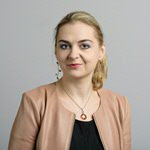
Long-range current-induced spin accumulation in chiral crystals | Arunesh Roy, Frank T. Cerasoli, Anooja Jayaraj, Karma Tenzin, Marco Buongiorno Nardelli, Jagoda Sławińska | The paper attempted to explain via first-principles calculations the origin of the intriguing, but not yet enough understood phenomenon called chirality-induced spin selectivity (CISS). We have performed calculations for a few chiral crystals and revealed that a conventional mechanism of charge-to-spin conversion - albeit in an unconventional geometry - strongly resembles CISS observed in molecules. In addition, we discovered that chiral materials host a peculiar spin-wave mode called persistent spin helix that can protect spin transport over large distances which might be a relevant factor contributing to strong signals associated with CISS. These findings are an important step toward the understanding of CISS in general crystalline and molecular systems.

Spectroscopic Manifestations and Implications for Catalysis of Quasi-d10 Configurations in Formal Gold(III) Complexes | Evgeniya A. Trifonova, Isaac F. Leach, Winfried B. de Haas, Remco W. A. Havenith, Moniek Tromp, Johannes E. M. N. Klein | The paper contributes to understanding what real oxidation states and charges on (reactive) atoms in molecules and materials are (rather than formal charges as we are used to derive). We use a combination of spectroscopy and computational methods to measure the real charges on the different atoms and at the same time provide more insights in charge transfer and redistribution processes. These results provide novel insights in performance of for example catalysts in reactions.

Automated STED nanoscopy for high-throughput imaging of cellular structures | Mol, F.N., & Vlijm, R. | To investigate rare or transient states in cells at the best possible spatial resolution, it is crucial to increase the throughput of super-resolution microscopy. Here, we have developed fully automated STED (Stimulated Emission Depletion microscopy) imaging, eliminating all manual steps including the selection and characterisation of the relevant (cellular) regions, sample focusing and positioning, and microscope adjustments. This automatic STED image acquisition increases the data output by roughly two orders of magnitude, resulting in a more efficient use of the high-end microscope, and the ability to detect and characterise objects that are only present in a small subset of the sample.
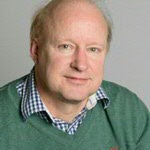
Giant magnon spin conductivity in ultrathin yttrium iron garnet films | X.-Y. Wei, O. Alves Santos, C. H. Sumba Lusero, G. E. W. Bauer, J. Ben Youssef and B. J. van Wees | When you make conducting wires thinner, their electrical resistance goes up. This is Ohm’s law, and it is generally right. An important exception is at very low temperatures, where the mobility of electrons increases when wires become so thin that they are effectively two-dimensional. Now, University of Groningen physicists, together with colleagues at Brest University have observed that something similar happens with the conductivity of magnons, spin waves that travel through magnetic insulators, much like a Mexican wave through a stadium. The increase in conductivity was spectacular, and occurred at ambient room temperature.

Vanadium in Silicon Carbide: Telecom-ready spin centres with long relaxation lifetimes and hyperfine-resolved optical transitions | Thomas Astner, Philipp Koller, Carmem M. Gilardoni, Joop Hendriks, Nguyen Tien Son, Ivan Gueorguiev Ivanov, Jawad Ul-Hassan, Caspar H. van der Wal, Michael Trupke | This paper reports comprehensive experimental results on surprisingly long spin relaxation times of vanadium-impurity quantum emitters in silicon carbide. Besides the spin relaxation of the atomic impurity itself, it reports interesting results on how the spin of the nucleus of the impurity atom plays an important role in understanding the quantum states. It is an important result for improving quantum technologies, beyond the famous NV centre in diamond. There is new physics since the energy scales are very different than for this NV centre. Technologically it is unique for its direct coupling to optics at telecom wavelengths, and since it is in a material well-known in semiconductor industry.

Solid-State NMR Spectroscopy Insights for Resolving Different Water Pools in Alginate Hydrogels | El Hariri El Nokab, M.; Lasorsa, A.; Sebakhy, K. O.; Picchioni, F.; van der Wel, P. C. A. |In this paper we pursue a new direction of research (for us): studies by solid-state NMR of hydrogel materials made from biological polymers: algae-derived polysaccharides (alginates). Via our NMR studies we study not only the polysaccharide matrix, but also the water molecules that are associated with the hydrogel. The NMR analysis reveals the dynamic properties of the water molecules, and distinguishes for instances waters in the hydrogel pores from those water molecules that associate closely with the sugar matrix. We are extending these types of analysis to the study of e.g. the use of such hydrogels as potential drug carriers.
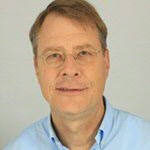
Implementing microwell slides for detection and isolation of single circulating tumor cells from complex cell suspensions | Liwen Yang, Mahdi Rivandi, André Franken, Maarten Hieltjes, Pieter Jan van der Zaag, Constantin Nelep, Jens Eberhardt, Stefan Peter, Dieter Niederacher, Tanja Fehm, Hans Neubauer | Cell loss during detection and isolation of circulating tumor cells (CTCs) is a challenge especially when label-free pre-enrichment technologies are used without the aid of magnetic particles. Although microfluidic systems can remove the majority of “contaminating” white blood cells (WBCs), their remaining numbers are still impeding single CTC isolation, thus making additional separation steps needed. This study aimed to develop a workflow from blood-to-single CTC for complex cell suspensions.
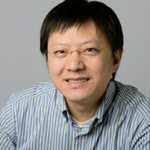
Correlated States in Strained Twisted Bilayer Graphenes Away from the Magic Angle | Le Zhang, Ying Wang, Rendong Hu, Puhua Wan, Oleksandr Zheliuk, Minpeng Liang, Xiaoli Peng, Yu-Jia Zeng, and Jianting Ye | Graphene moiré superlattice formed by rotating two graphene sheets can host strongly correlated and topological states when flat bands form at so-called magic angles. Here, we report that, for a twisting angle far away from the magic angle, the heterostrain induced during stacking heterostructures can also create flat bands. Combining a direct visualization of strain effect in twisted bilayer graphene moiré superlattices and transport measurements, features of correlated states appear at “non-magic” angles in twisted bilayer graphene under the heterostrain. Observing correlated states in these “non-standard” conditions can enrich the understanding of the possible origins of the correlated states and widen the freedom in tuning the moiré heterostructures and the scope of exploring the correlated physics in moiré superlattices.
More news
-
15 September 2025
Successful visit to the UG by Rector of Institut Teknologi Bandung
